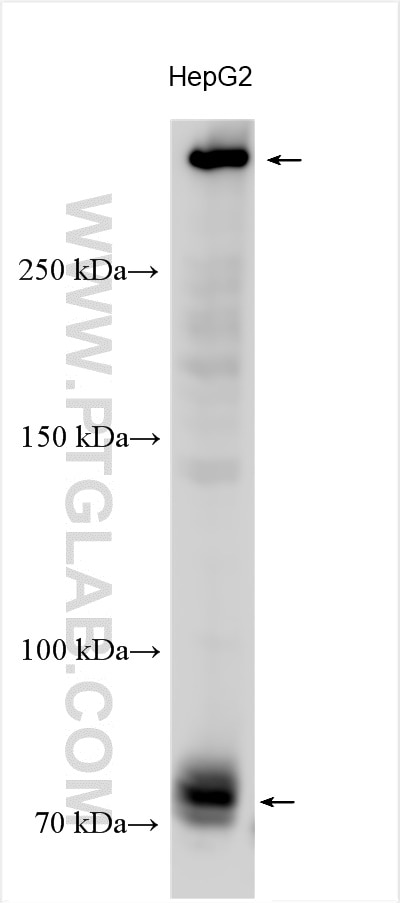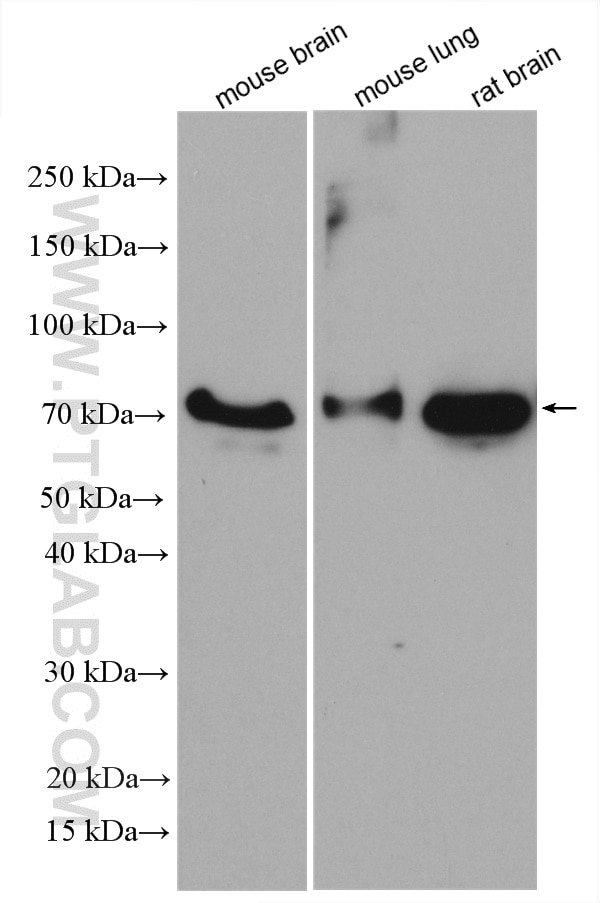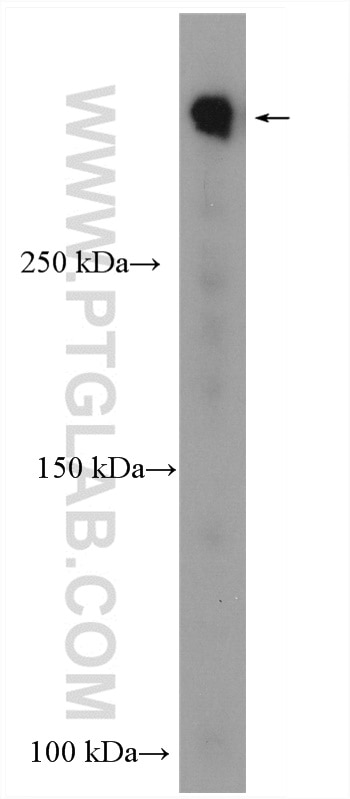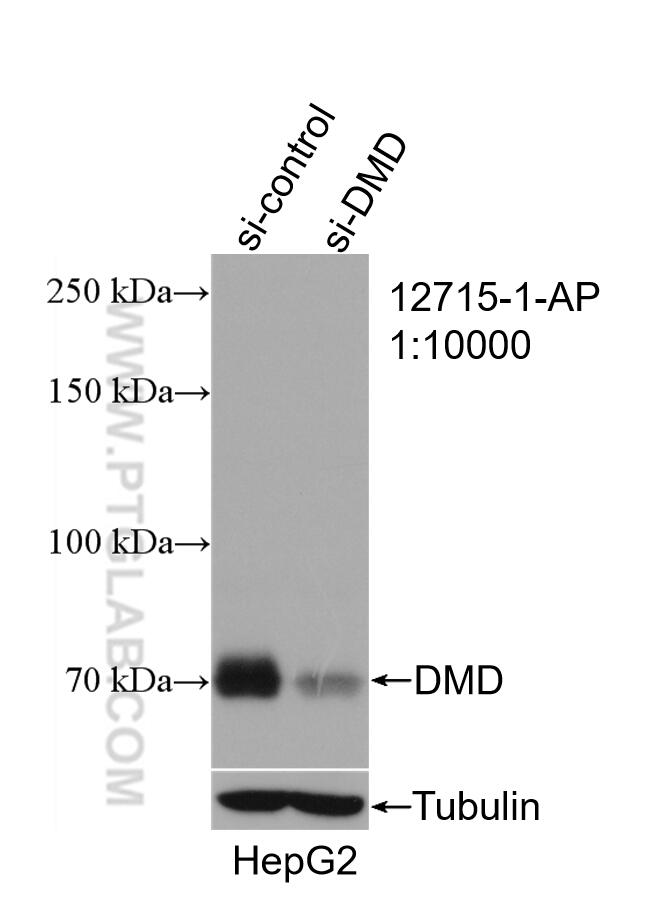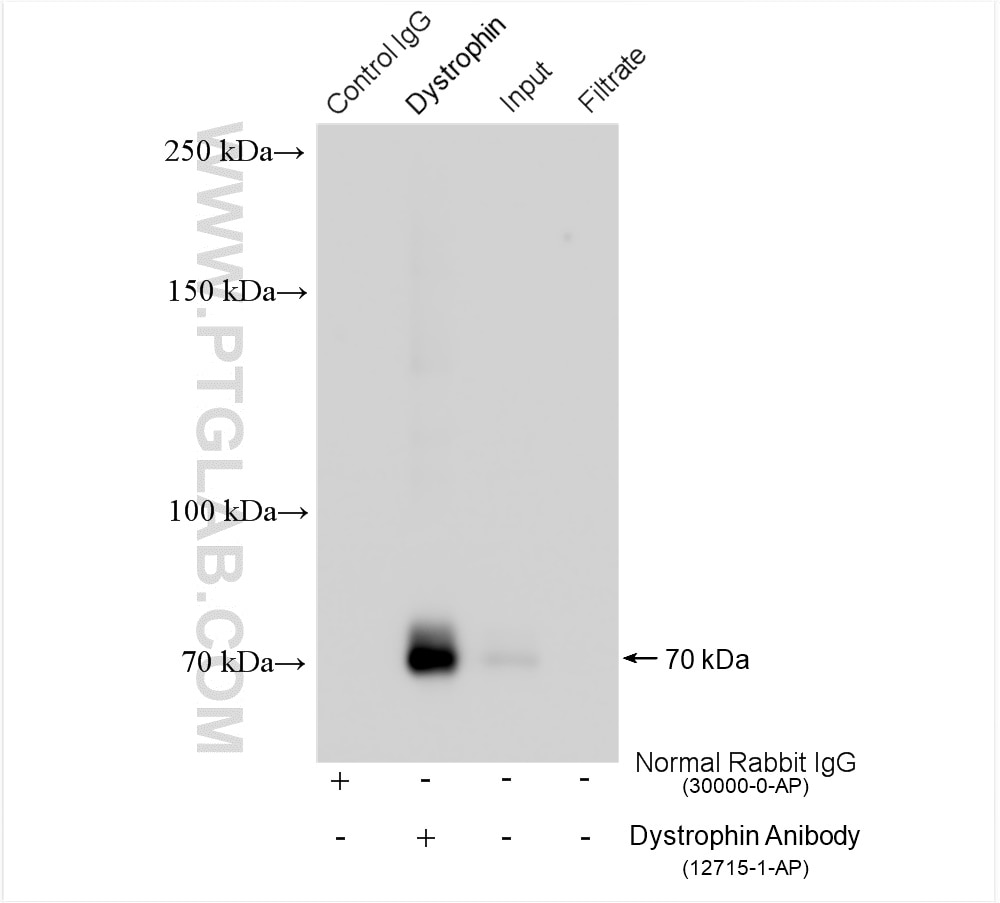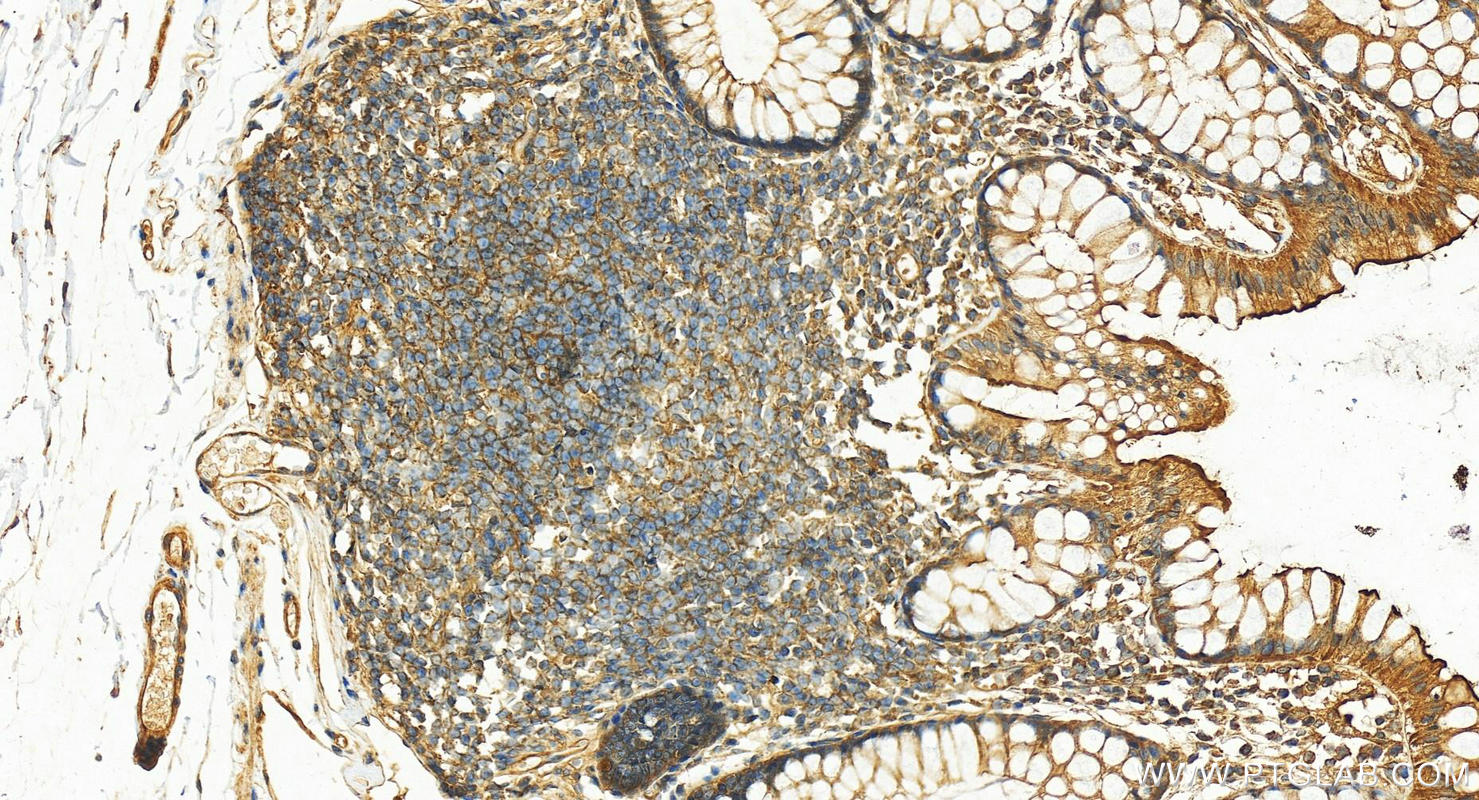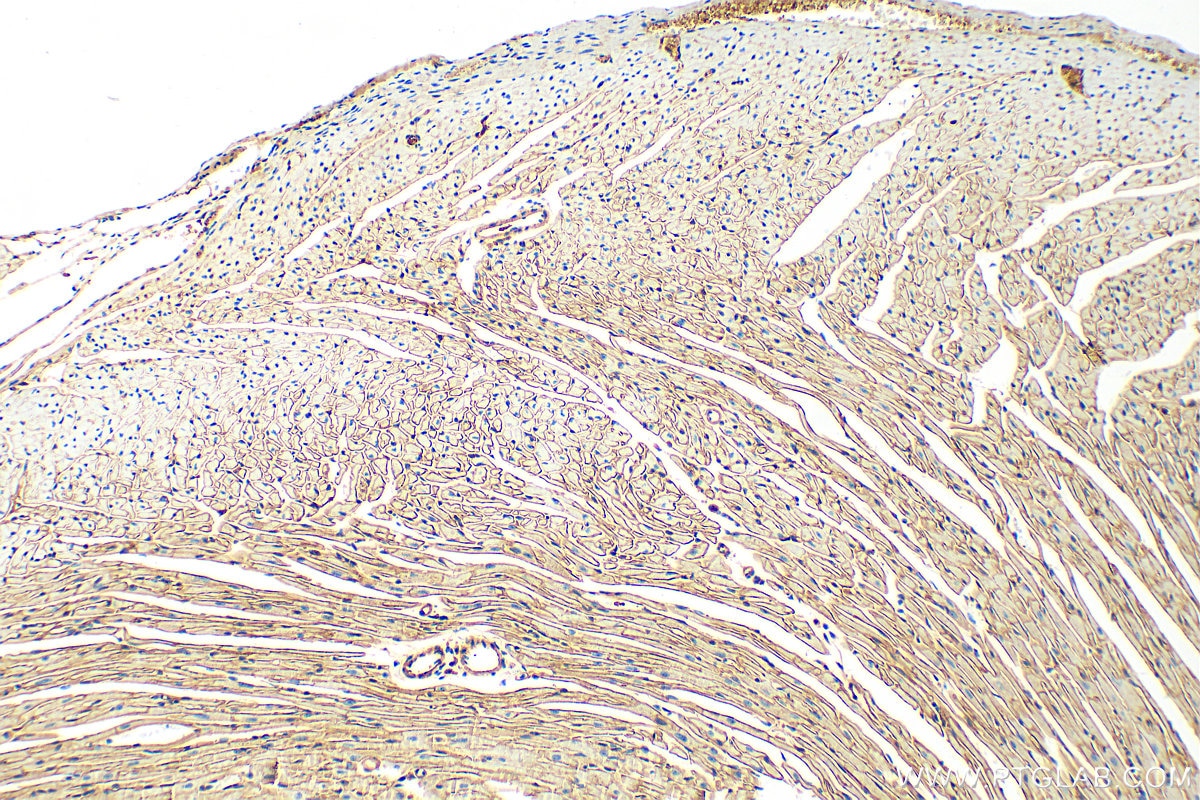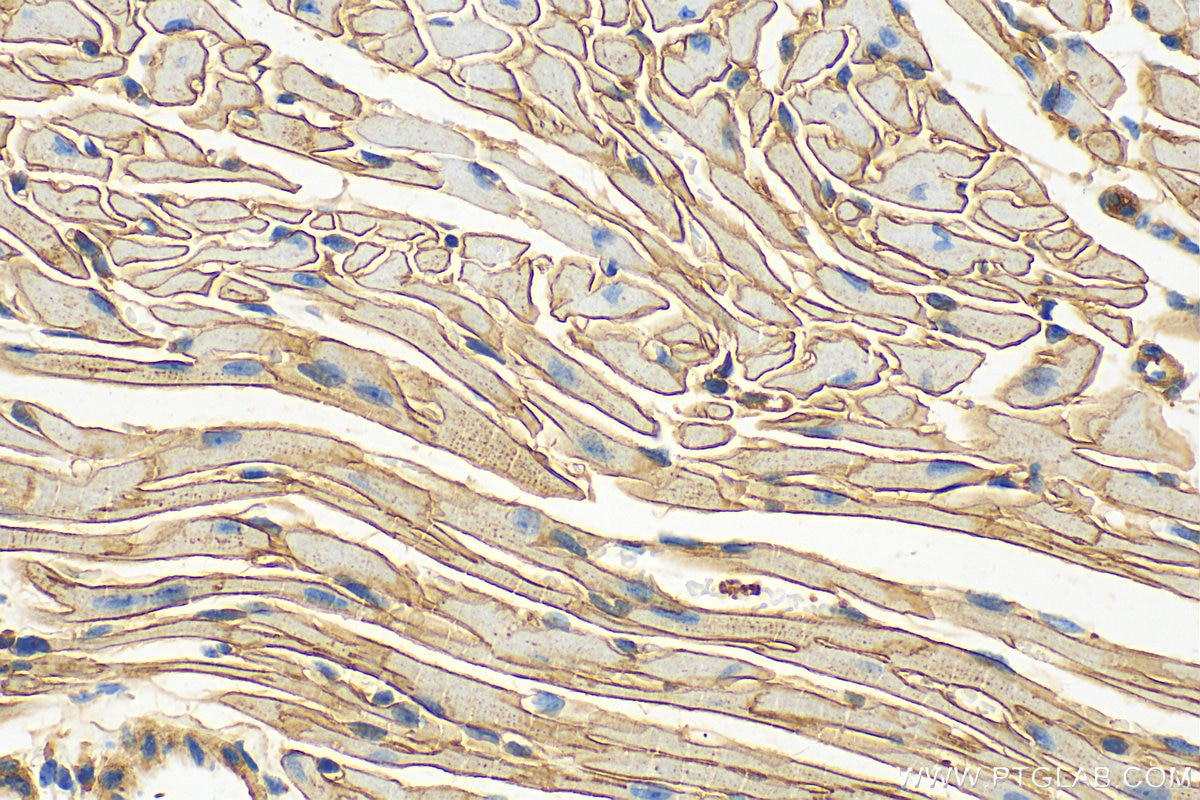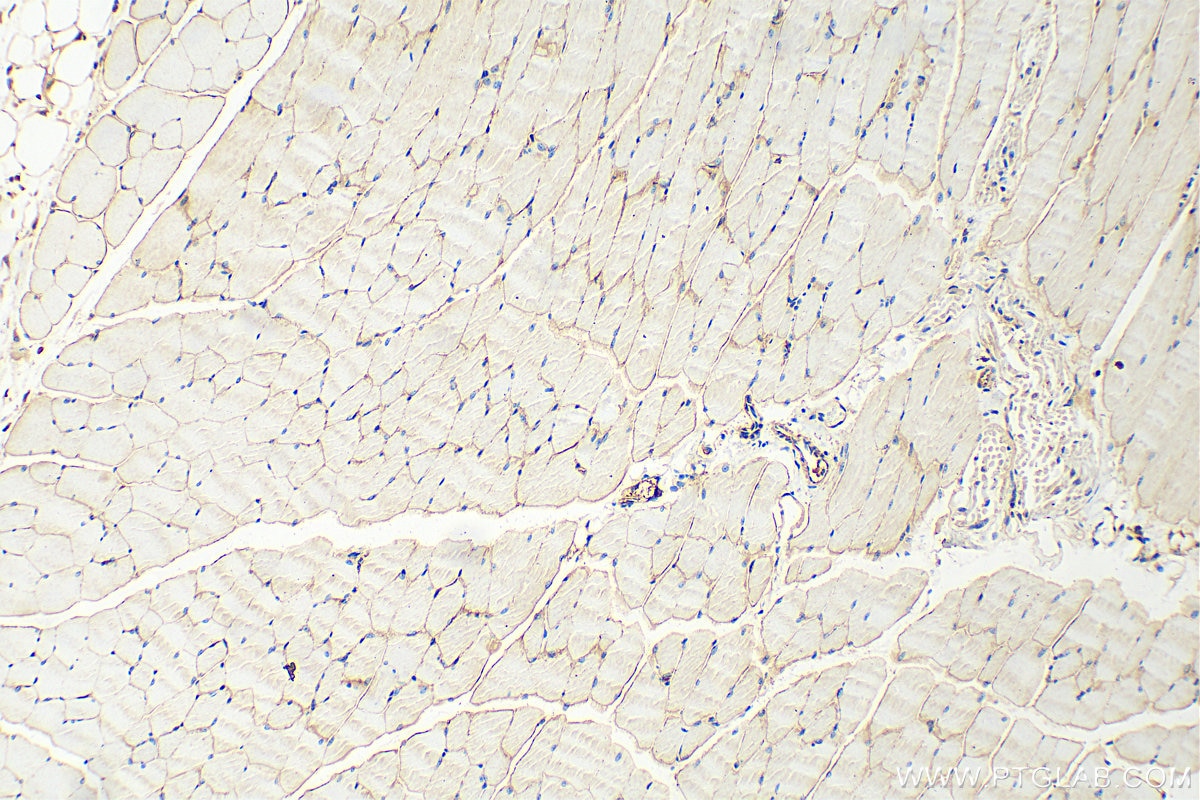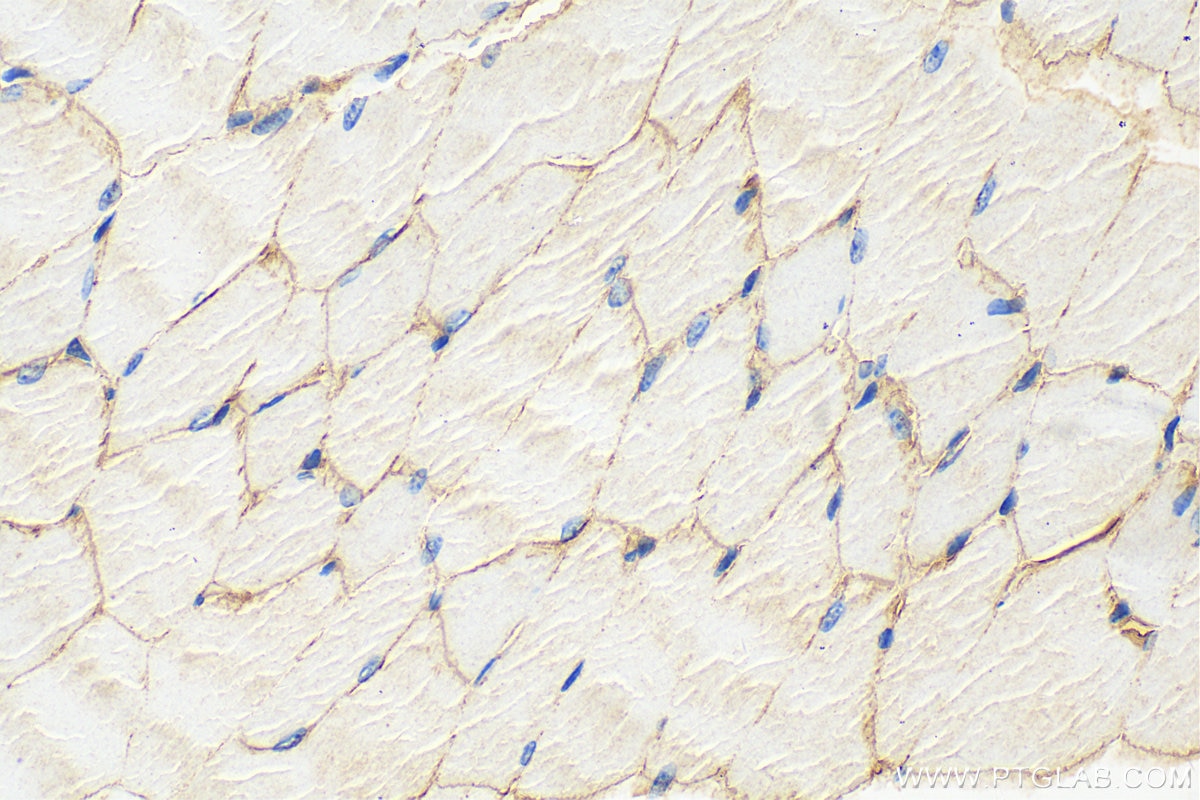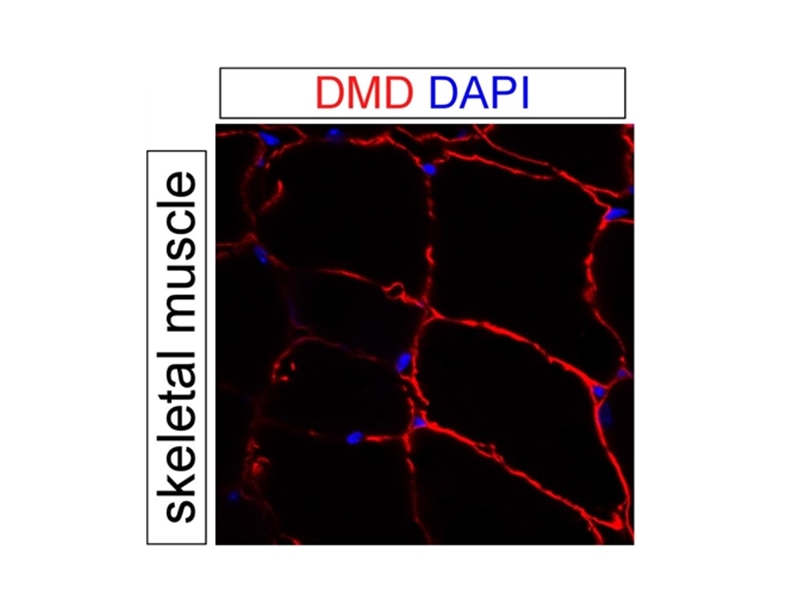- Featured Product
- KD/KO Validated
Dystrophin Polyklonaler Antikörper
Dystrophin Polyklonal Antikörper für WB, IHC, IF-P, IP, ELISA
Wirt / Isotyp
Kaninchen / IgG
Getestete Reaktivität
human, Maus, Ratte
Anwendung
WB, IHC, IF-P, IP, CoIP, ELISA
Konjugation
Unkonjugiert
Kat-Nr. : 12715-1-AP
Synonyme
Geprüfte Anwendungen
| Erfolgreiche Detektion in WB | HepG2-Zellen, Maushirngewebe, Mauslungengewebe, Rattenhirngewebe |
| Erfolgreiche IP | Maushirngewebe |
| Erfolgreiche Detektion in IHC | Maus-Skelettmuskelgewebe, humanes Kolongewebe, Mausherzgewebe Hinweis: Antigendemaskierung mit TE-Puffer pH 9,0 empfohlen. (*) Wahlweise kann die Antigendemaskierung auch mit Citratpuffer pH 6,0 erfolgen. |
| Erfolgreiche Detektion in IF-P | Maus-Skelettmuskelgewebe, Rattenherzgewebe |
Empfohlene Verdünnung
| Anwendung | Verdünnung |
|---|---|
| Western Blot (WB) | WB : 1:5000-1:50000 |
| Immunpräzipitation (IP) | IP : 0.5-4.0 ug for 1.0-3.0 mg of total protein lysate |
| Immunhistochemie (IHC) | IHC : 1:1000-1:4000 |
| Immunfluoreszenz (IF)-P | IF-P : 1:50-1:500 |
| It is recommended that this reagent should be titrated in each testing system to obtain optimal results. | |
| Sample-dependent, check data in validation data gallery | |
Veröffentlichte Anwendungen
| KD/KO | See 1 publications below |
| WB | See 13 publications below |
| IHC | See 5 publications below |
| IF | See 18 publications below |
| IP | See 3 publications below |
| CoIP | See 1 publications below |
Produktinformation
12715-1-AP bindet in WB, IHC, IF-P, IP, CoIP, ELISA Dystrophin und zeigt Reaktivität mit human, Maus, Ratten
| Getestete Reaktivität | human, Maus, Ratte |
| In Publikationen genannte Reaktivität | human, Maus, Ratte |
| Wirt / Isotyp | Kaninchen / IgG |
| Klonalität | Polyklonal |
| Typ | Antikörper |
| Immunogen | Dystrophin fusion protein Ag3408 |
| Vollständiger Name | dystrophin |
| Berechnetes Molekulargewicht | 3685 aa, 427 kDa |
| Beobachtetes Molekulargewicht | 70 kDa, 430 kDa |
| GenBank-Zugangsnummer | BC028720 |
| Gene symbol | Dystrophin |
| Gene ID (NCBI) | 1756 |
| Konjugation | Unkonjugiert |
| Form | Liquid |
| Reinigungsmethode | Antigen-Affinitätsreinigung |
| Lagerungspuffer | PBS with 0.02% sodium azide and 50% glycerol |
| Lagerungsbedingungen | Bei -20°C lagern. Nach dem Versand ein Jahr lang stabil Aliquotieren ist bei -20oC Lagerung nicht notwendig. 20ul Größen enthalten 0,1% BSA. |
Hintergrundinformationen
Dystrophin (DMD or BMD) is a large muscle protein whose mutations cause Duchenne muscular dystrophy (DMD) and Becker muscular dystrophy (BMD), the childhood neuromuscular disorders that result in progressive muscle weakness, respiratory difficulties and cardiovascular dysfunction. Dystrophin is a crucial component of the dystrophin-glycoprotein complex which is essential for muscle membrane integrity and stability. Dystrophin is located on the cytoplasmic face of the sarcolemma and connects the cytoskeletal network to the sarcolemma and extracellular matrix. Multiple isoforms of dystrophin exist due to the alternative splicing, with a wide range of MW (69-72, 110-143, 271, 426 kDa). Most tissues contain transcripts of several isoforms.
Protokolle
| PRODUKTSPEZIFISCHE PROTOKOLLE | |
|---|---|
| WB protocol for Dystrophin antibody 12715-1-AP | Protokoll herunterladen |
| IHC protocol for Dystrophin antibody 12715-1-AP | Protokoll herunterladenl |
| IF protocol for Dystrophin antibody 12715-1-AP | Protokoll herunterladen |
| IP protocol for Dystrophin antibody 12715-1-AP | Protokoll herunterladen |
| STANDARD-PROTOKOLLE | |
|---|---|
| Klicken Sie hier, um unsere Standardprotokolle anzuzeigen |
Publikationen
| Species | Application | Title |
|---|---|---|
Nat Biomed Eng Restoration of dystrophin expression in mice by suppressing a nonsense mutation through the incorporation of unnatural amino acids. | ||
Sci Adv Semirational bioengineering of AAV vectors with increased potency and specificity for systemic gene therapy of muscle disorders | ||
Nat Commun Identification of genes associated with cortical malformation using a transposon-mediated somatic mutagenesis screen in mice.
| ||
Oxid Med Cell Longev Targeting the Ang2/Tie2 Axis with Tanshinone IIA Elicits Vascular Normalization in Ischemic Injury and Colon Cancer. | ||
Oxid Med Cell Longev Knockdown of Salusin-β Improves Cardiovascular Function in Myocardial Infarction-Induced Chronic Heart Failure Rats. | ||
Nanomedicine Muscle cytotoxicity and immuno-reactivity analysis of the porous carbon nanospheres fabricated by high temperature calcination |
Rezensionen
The reviews below have been submitted by verified Proteintech customers who received an incentive for providing their feedback.
FH Lauren (Verified Customer) (08-10-2018) |
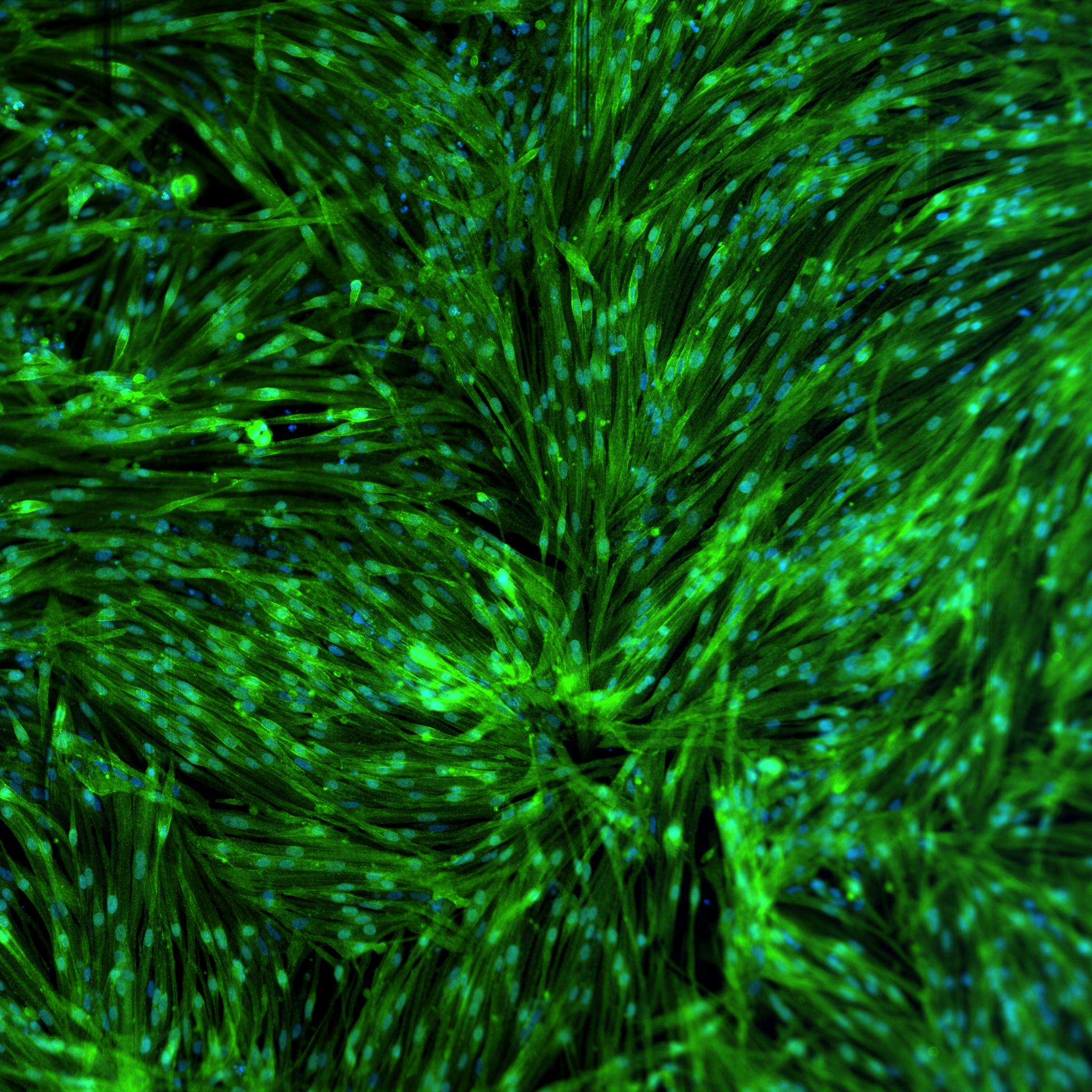 |
